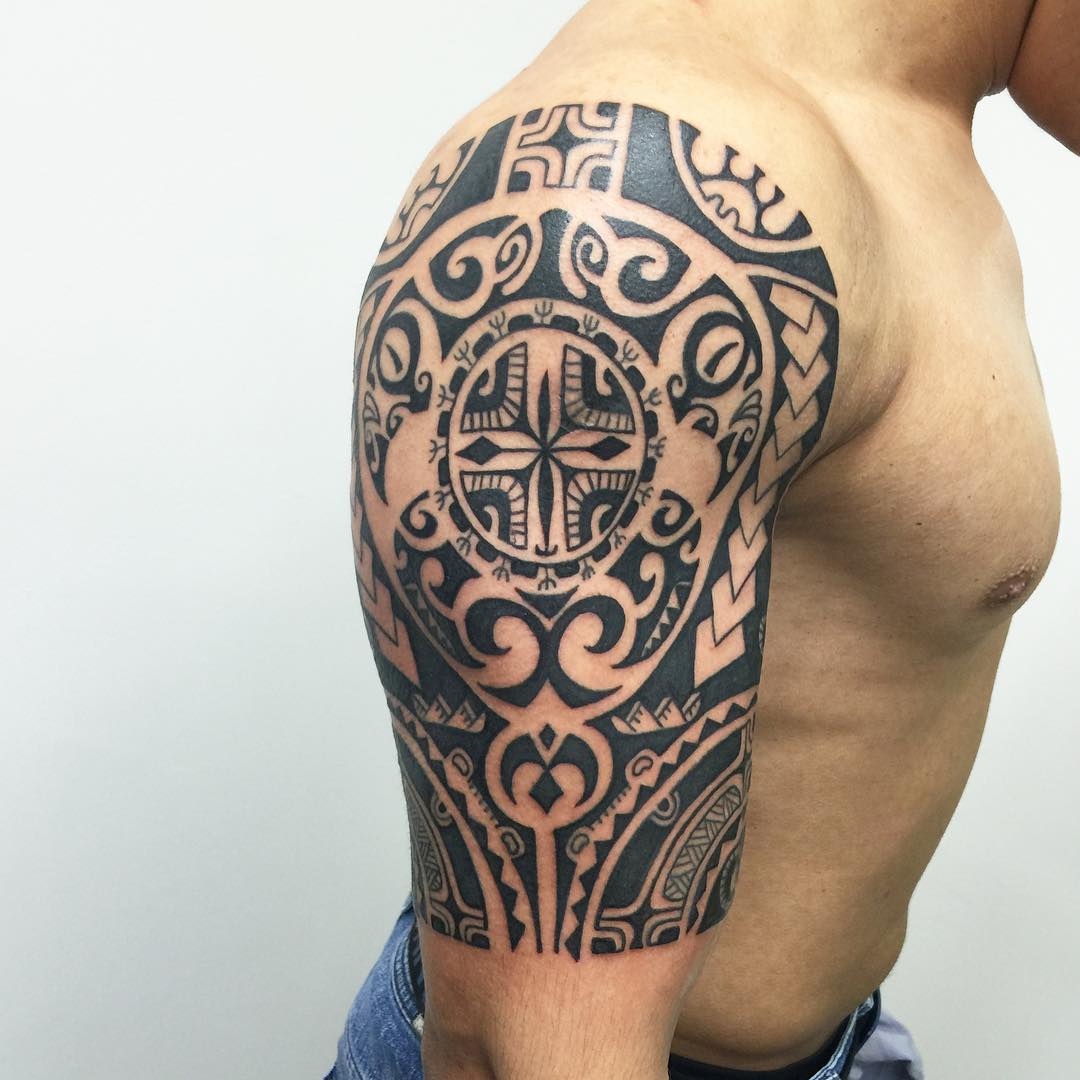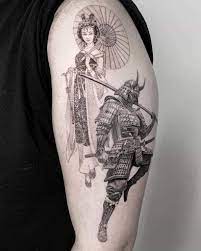
Maori tattoo designs are unlike anything else because they hold such deep significance for Maori culture and tradition, yet are also exquisitely intricate and stunningly beautiful. When white people copy these tattoo designs without permission or consultation from Maori people themselves, this can be seen as theft of cultural property and tradition by Maori people themselves.
The Primary Manawa Lines
The primary Manawa lines (skin-looking lines) represent your heart, life journey, and time spent here on Earth. Korus offsetting from these main Manawa lines means significant people in your life.
Hei Matau
A Hei Matau (carved fish hook) symbolizes strength and prosperity for its users, drawing inspiration from Maori legend about Maui catching the giant fish that later became Aotearoa or New Zealand. Additionally, this fishhook signifies our connection to sea life. Hei matau is worn around the necks of people with strong ties to New Zealand and can also be displayed as part of its culture. Common materials include bone or pounamu; other materials may also be suitable. Hei matau are exquisite pieces that embody Maori culture and heritage, making an excellent way to show your respect for them as a people and culture. Tourists also frequently purchase them. Some manufacturers mass-produce these beautiful art objects for this market and may be criticized. Still, genuine hei matau should always be treated as unique and treasured.
Manaia
A manaia is a spiritual guardian that symbolizes protection, strength, and power, with the head of a bird and the human body representing strong links between Maori spirituality and everyday life. Three fingers represent birth, life, and death, while its fourth finger points towards an afterlife destination.
Koru
Another tattoo symbol commonly associated with Maori culture is the koru, an unfurled fern leaf symbolizing new beginnings and growth with harmony. Additionally, its counterpart, the Hei Matau fish hook, symbolizes good fortune, prosperity, and abundance while representing safe travels over water as one of their primary food sources.
Maori Tattoos
Maori Tattoos are an increasingly popular choice for both men and women looking to express their individuality through artful tattooing. From intricate designs to incredible meaning, these complex and breathtakingly designed pieces of artwork add mystery and beauty to your look, making Maori Tattoos the ideal way to do just that! It is no surprise why so many have adopted this trend.
Wave
Maori Tattoos are stunning works of art that convey significant meaning. Traditionally created using a tool known as the tohunga, these intricate Tattoos could tell stories about family, heritage, and beliefs; tribes could use them to identify men by their position, qualifications, and social standing. Wearing one may be a bold move since most are inked onto wrists.
Toki Tattoo Design
The Toki tattoo design is a Maori symbol of strength and courage, reminding its wearer not to give up and keep moving forward no matter the difficulty of any situation. It often pairs well with other symbols and designs to form an eye-catching piece of artwork; depending on its pattern, it may also symbolize your goals or intentions for life – Maori artists usually ask their clients which aspect they would like it to represent before designing an exclusive pattern for each client.
Hei Tiki
Hei tikis are a staple in Maori tattoo designs, symbolizing fertility and ancestry with their carving from precious pounamu greenstone. Worn as personal adornment by wearers who carry these family heirlooms as personal adornment, these symbols often serve as personal talismans with great mana.
Tattoos’ Historical Significance
Tattoos were once used as a powerful form of communication, relaying everything from social status and profession to an individual’s tribal affiliations and memberships.
Hei Tiki Tattoo
A hei tiki tattoo can be elegant and stunning on one’s arm, representing one of the most distinctive designs from Maori culture. Carved from greenstone and featuring its milky hue, James Cook saw this particular hei tiki displayed to him on a manikin of a woman kneeling behind a tattoo artist in Figure 7, later acquired by English collector William Ockelford Oldman.

